by Carolyn Bernhardt
December 18, 2023
A formidable adversary to landscapes across Minnesota, oak wilt fungus (Bretziella fagacearum) has spread with alarming speed. With no cure yet available, oak wilt’s reach extends across counties, causing an estimated $60 million in damages over the past decade. The urgency for early detection and intervention against this fungal disease has never been more critical.
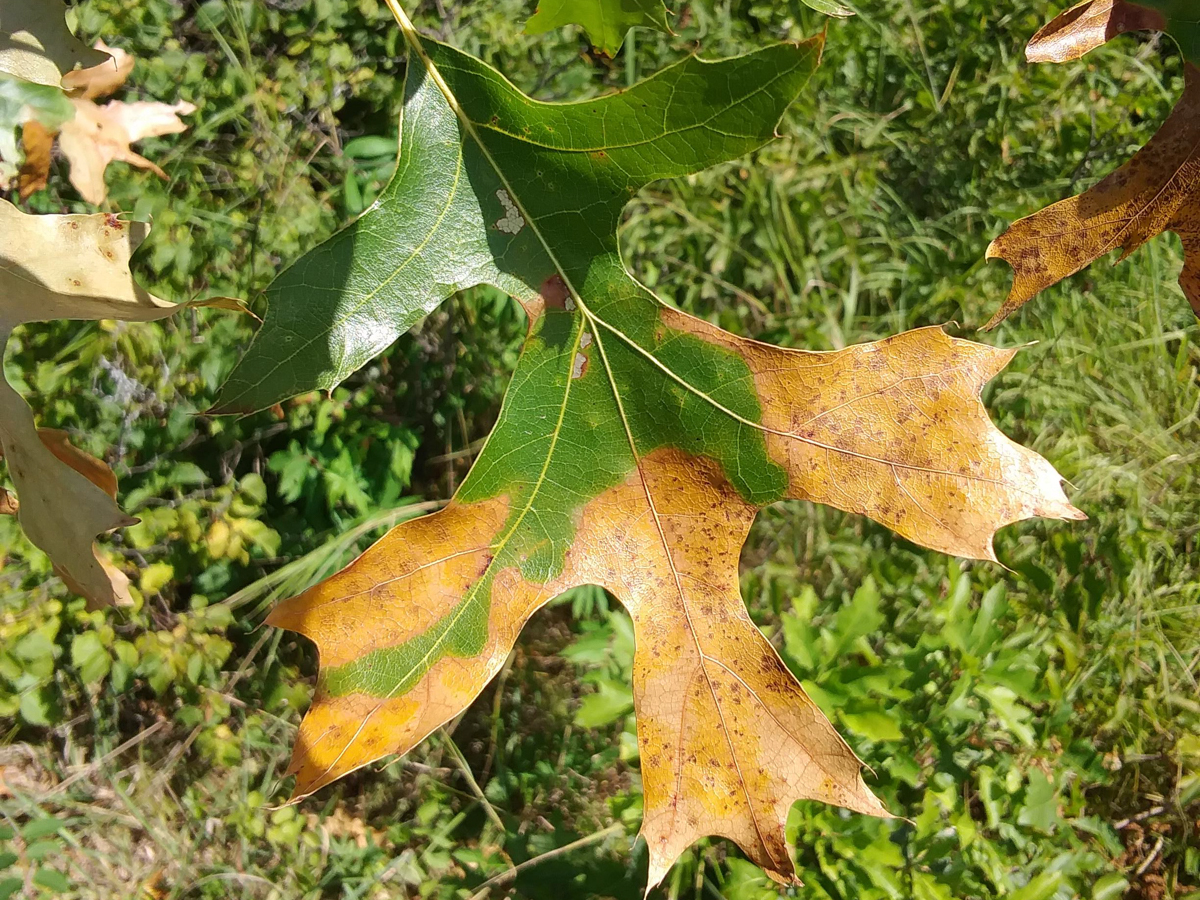
Amidst this turmoil, innovative Minnesota Invasive Terrestrial Pests and Plants Center (MITPPC)-funded research projects have honed in on slowing this destructive force to a crawl. Through revolutionary rapid testing and diagnostics in the field, drone surveillance, and refining disease outbreak containment methods, University of Minnesota experts are making breakthroughs in oak wilt management.
A LAMP assay brings rapid accuracy
Abdennour Abbas, PhD, an associate professor in the Department of Bioproducts and Biosystems Engineering in the College of Food, Agriculture, and Natural Resource Sciences, is heading up a groundbreaking project to develop novel diagnostic tools for rapid and early oak wilt detection. Traditional oak wilt testing approaches use polymerase chain reaction, or PCR testing. PCR results can be slow, laborious, and limited by their reliance on time-consuming lab procedures. Abbas and his team recognized these limitations and worked toward a solution that transcends the constraints of conventional methods.
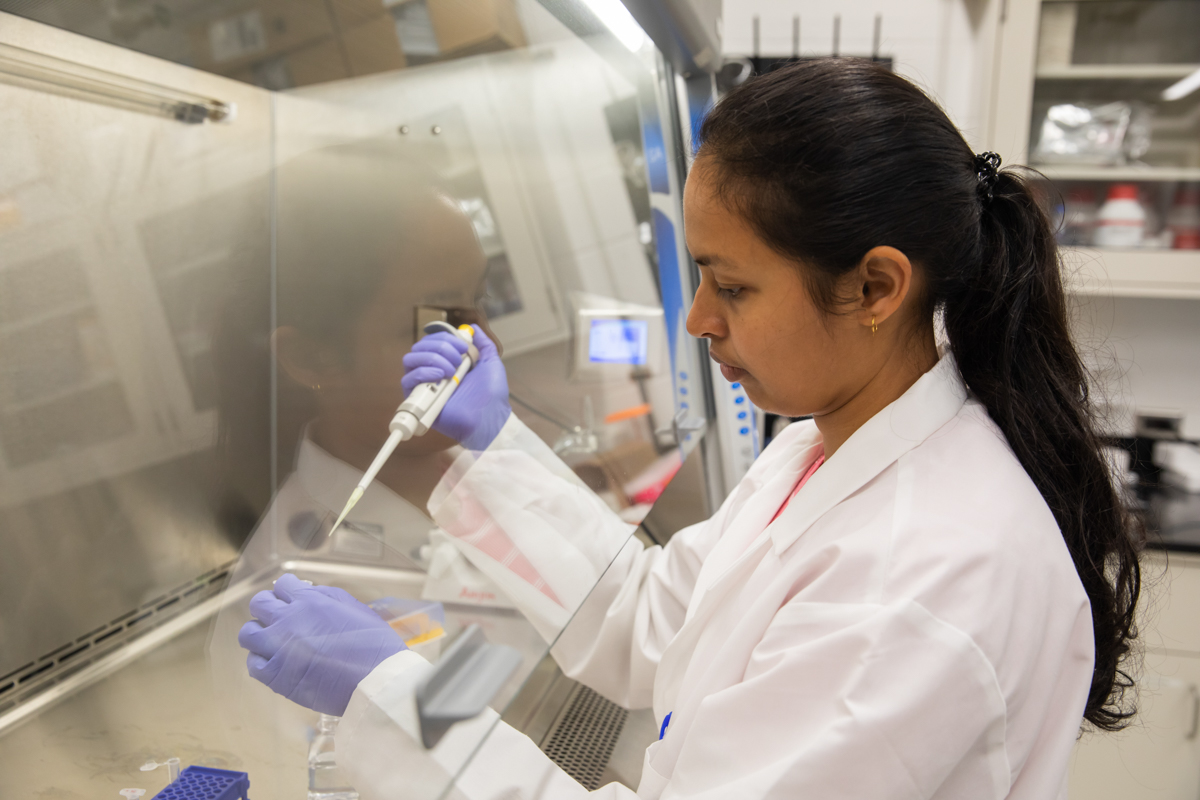
The team turned to Loop-Mediated Isothermal Amplification, or LAMP testing. Scientists use LAMP to amplify specific DNA sequences. "The detection method is similar to PCR but is a lot faster,” says Vinni Thekkudan Novi, a PhD candidate in the Biosensors and Bionanotechnology Lab who helped develop the test. Thekkudan Novi says she collaborated with Hamada Aboubkr, PhD, a former post-doctoral research associate who contributed to the project. “It allows [users to create] pathogen DNA copies at a constant temperature, making it much faster than conventional PCR that cycles at different temperatures," she says.
Due to its simplicity, speed, and accuracy, LAMP is often employed in various fields, including medical diagnostics, environmental testing, and pathogen detection. Abbas’ team, however, is the first to apply LAMP to oak wilt detection.
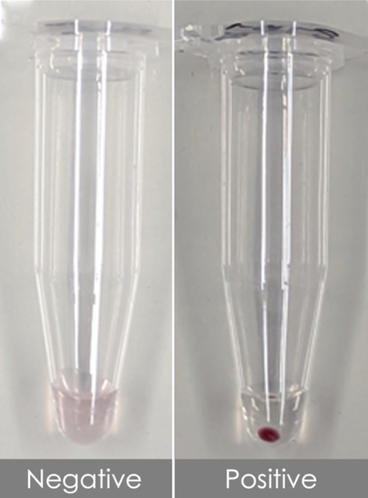
Abbas and Thekkudan Novi have also developed a LAMP test that offers users a visible positive or negative result, further speeding up the process of pinpointing oak wilt in the field. In this test, gold particles covered in tiny pieces of DNA group together on DNA strands, making small clumps that turn red and are easy to spot with the naked eye. Combining DNA amplification and nanoparticle assembly, the test offers results within 30 minutes and boasts 100% accuracy. "The novelty here comes from developing a particle-based DNA assembly reaction," says Thekkudan Novi. This assay marks a paradigm shift. It promises timely detection in the field, enabling a land manager to identify and curb the disease's spread early on.
Thekkudan Novi explains that eliminating the need for lab-based analysis can significantly cut the cost of oak wilt testing. “However,” she says, “with this method, there is an amount of technical experience required to handle some of the samples. So, landowners may not be able to use it on their own, but they can reach out to clinics close by who can come and perform the test.” In the future, she says the goal is to develop a more accessible test that landowners can use independently.
Next year, Abbas says the team hopes to apply this testing method to other forest pathogens. “Our current focus is really to deliver on our promise to our sponsors,” he says. “While academic productivity is important, our ultimate and most relevant measure of success is getting the technology for oak wilt detection in the hands of [land managers] and having an impact on early oak wilt detection in Minnesota and beyond.”
Mapping the canopy
Jeannine Cavender-Bares, PhD, a Distinguished McKnight University Professor in the College of Biological Sciences, leads an ambitious endeavor to detect oak wilt and integrate preventive measures more accurately. The project encompasses multifaceted approaches, blending cutting-edge technology with ecological insights. They aim to develop comprehensive, sustainable, and practical solutions that can be implemented at scale. They want to ensure a lasting impact on disease management within Minnesota's oak populations.
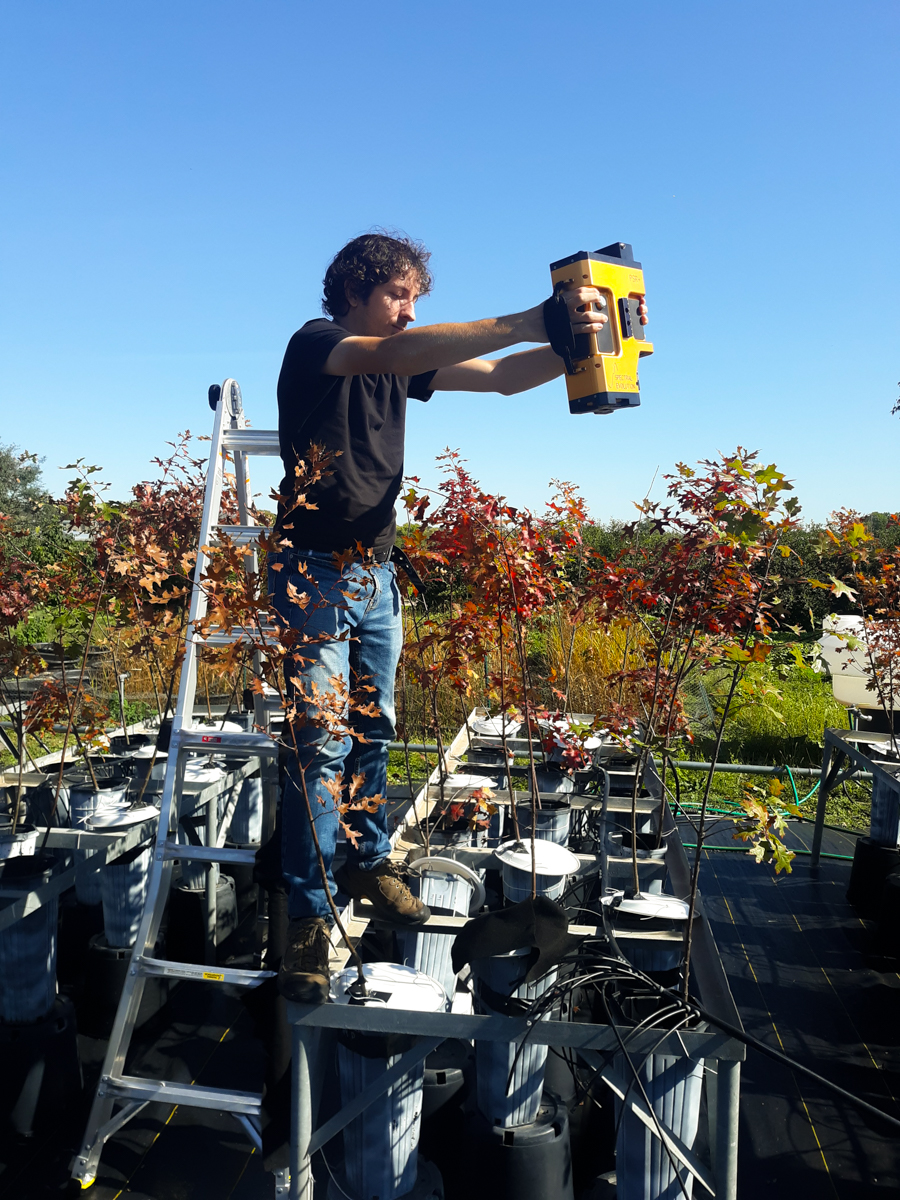
Cavender-Bares's team has comprehensively explored hyperspectral imaging. It is a powerful technology that uses unique spectral signatures to identify objects and surfaces. The researchers sought to find novel ways to identify oak wilt before visible symptoms manifest. Their use of this technology at multiple scales—leaf, tree crown, and forest stand levels—promises a transformative leap in early detection capabilities. Their research makes it possible to decipher spectral signatures indicative of oak wilt, including distinct wavelengths or light responses reflected by foliage in trees infected with oak wilt. With this technology, land managers would be able to pinpoint affected trees and intervene sooner to help prevent the disease from spreading.
Testing root-cutting protocols
The research team also investigated root-cutting protocols, redefining strategies to impede below-ground transmission of the oak wilt fungus. “Oaks form these oak wilt pockets where the fungus spreads from one tree to its neighbors through roots below ground that are grafted together,” says Cavender-Bares. The project includes an experimental management component, led by Jennifer Juzwik, PhD, of the US Forest Service. It involves using a vibratory plow to sever roots so they cannot graft together and spread the disease from an infected tree to its neighbors.
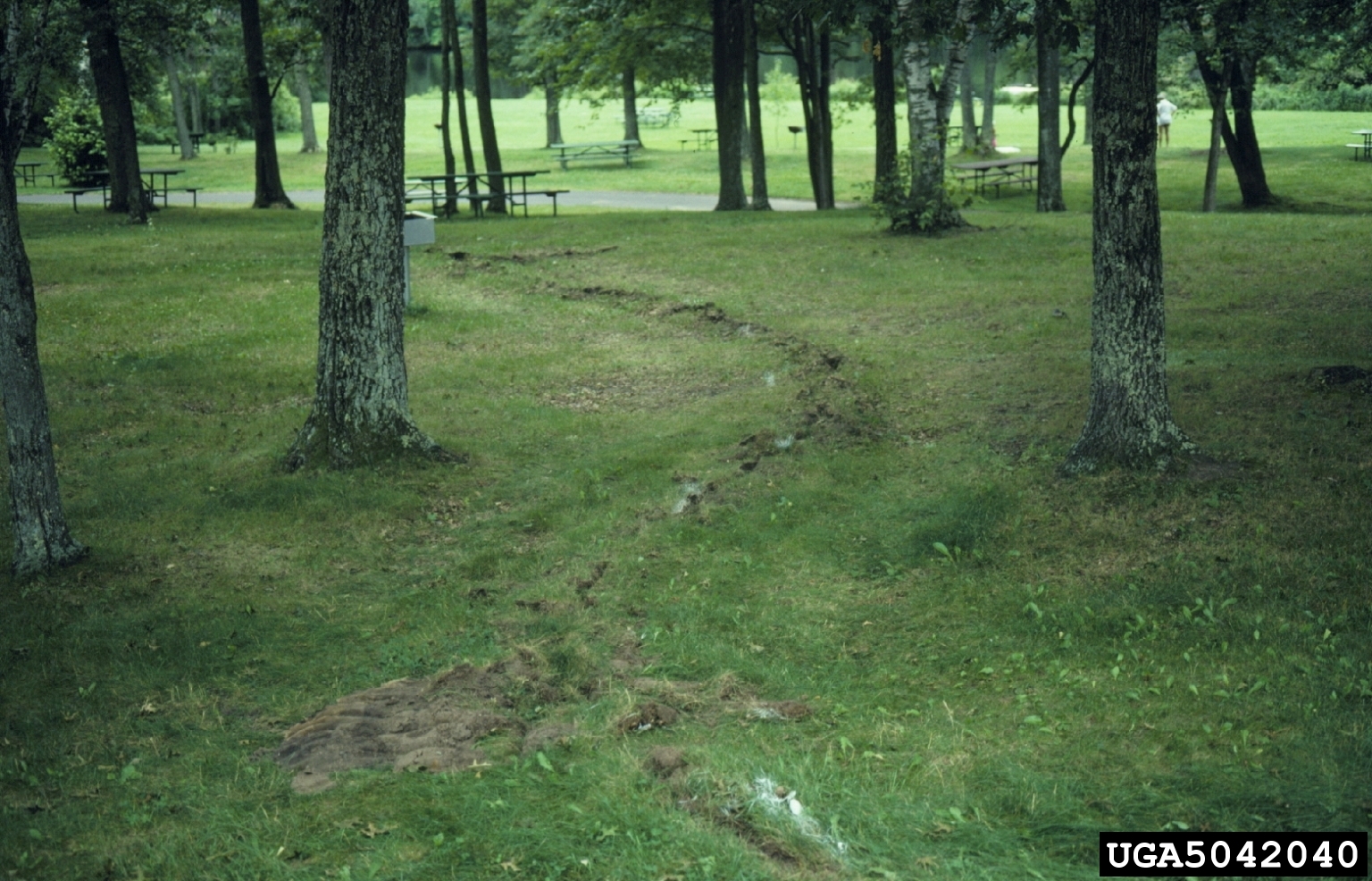
Juzwik has observed a potential flaw in current forestry practices involving a single vibratory plow cut: after several years, root grafts can reform, hindering the efficacy of the single plow line. So now, the team is focused on testing a double plow line, which is when the roots are cut in two different spots with a space between the two plow tracks.
The research team suspects that adding a second plow line could better help prevent root reconnection. “It’s a long-term effort,” she says. Juzwik and the management team set up 22 sites in various areas around the state to test single- and double-plow lines. “It took a good long while to get those set up, and we are still monitoring them,” says Cavender-Bares. The researchers need more time to observe how long the efficacy of the approach lasts.
New paths forward
Together, these projects epitomize a concerted effort to revolutionize early detection and containment strategies for oak wilt. They chart a path toward safeguarding Minnesota's oak trees and fostering resilience against the pervasive threat of oak wilt.
“MITPPC has been a remarkable partner not only through funding but also by connecting [partners], sharing expertise, and taking the administrative burden away from the researchers so we can focus on what matters,” Abbas says. “It is also a great model of the way we should connect academia, State decision-makers, and the people who need technological solutions to their problems.”
Cavender-Bares echoes similar sentiments, emphasizing the significance of MITPPC's support. "The funding from MITPPC has been instrumental in driving our efforts to develop methods for early detection at landscape and regional scales and test effective strategies for containment," she says. "Their continuous support and understanding of our research goals have been integral to our progress in making substantial advancements in combating oak wilt."
The Minnesota Invasive Terrestrial Plants and Pests Center is supported by the Environment and Natural Resources Trust Fund, as recommended by the Legislative-Citizen Commission for Minnesota Resources.
Stay connected by signing up for the MITPPC newsletter or follow us on LinkedIn or Facebook.
You may also like...
- Mapping deadly oak wilt disease from space to protect our forests
- Novel diagnostic tools for rapid and early detection of oak wilt, research project
- Accurate detection and integrated treatment of oak wilt, research project
- Oak wilt research papers by MITPPC
- Oak wilt management, MN Department of Natural Resources